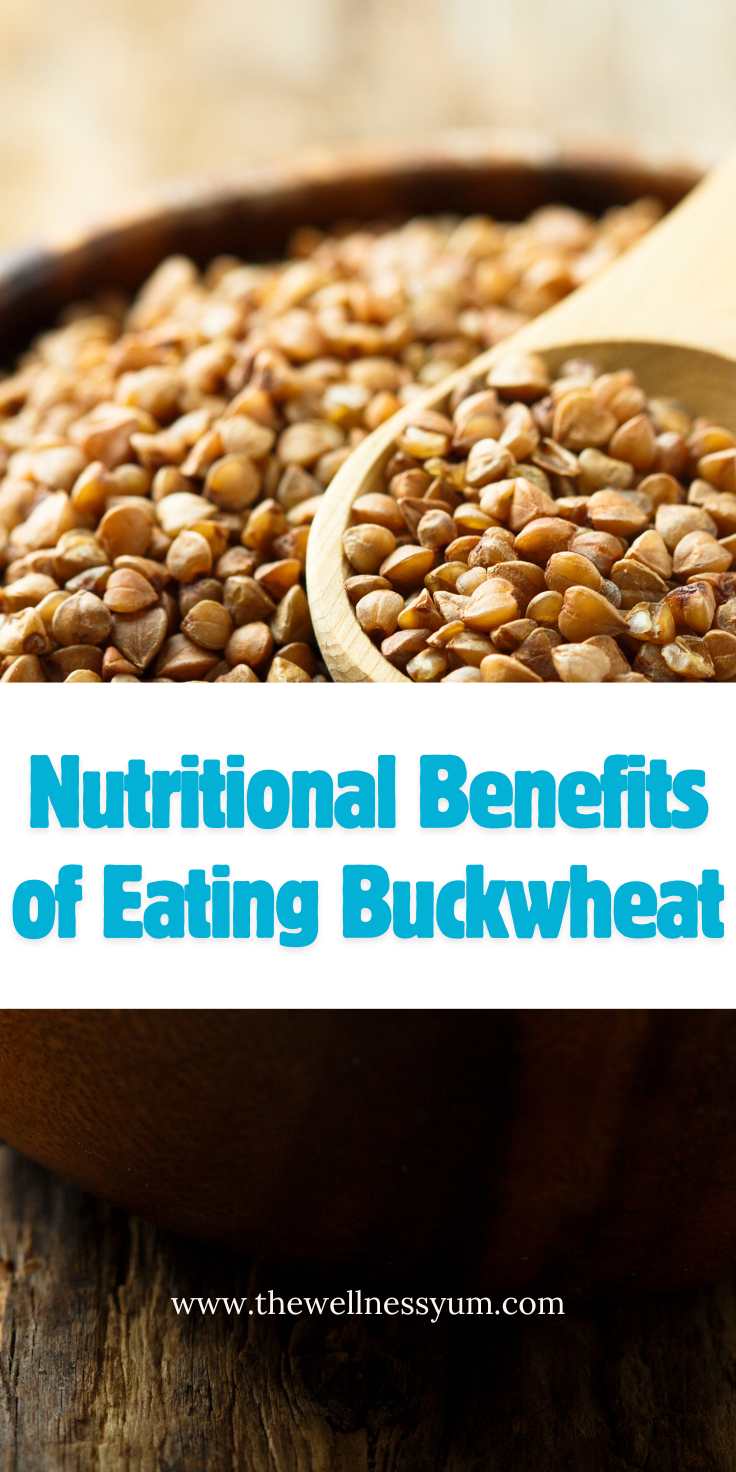Buckwheat is linked to knotweed, sorrel, and rhubarb, however, it is not related to wheat. Because of the high quantity of complex carbohydrates in its seeds, it is known to be pseudocereal. Bees are drawn to the fragrant blossoms, which aid in the production of flavorful and black honey. Buckwheat kernels are comparable in size to wheat kernels and have a distinctive triangular shape. For consumption, the exterior shell is removed. Buckwheat is available in two forms: roasted and unroasted. Buckwheat has a delicate, mild taste when unroasted. The flavour of roasted buckwheat is earthy and nutty. The hues vary from a tannish pink to a dark brown. Buckwheat may be processed into flour and comes in dark and light varieties. The darker the kind, the more nutritious it is.

Buckwheat was initially farmed in the Himalayan high plains and Southeastern China centuries ago. It was a staple diet before rice, and subsequently other cereal grains gradually took their place. During civilization, the grains offered critical nutrients, lipids, protein, and minerals to local people, allowing them to live in harsh environments.
Buckwheat is a wonderful source of magnesium, copper, phosphorus, and dietary fibre, as well as a superb source of manganese. It includes two flavonoids, quercitin, and rutin, which have important health-promoting properties. Buckwheat protein is of good quality, including all eight necessary amino acids, including lysine. It helps to decrease blood pressure, control diabetes, prevent cancer, improve cholesterol levels, digestion, immune system, avoid asthma attacks, clear gallstones, and give relief from constipation and other digestive issues because of its high nutritional content.
Benefits Of Eating Buckwheat, Nutrition Facts, And Side Effects
In comparison to other cereal grains, buckwheat has a high copper, zinc, and manganese concentration. Buckwheat has a high bioavailability of copper, zinc, and potassium. Potassium helps to keep the acid-water balance in the blood and tissue cells in check. Zinc aids in the immune system's strengthening. Copper deficiency causes a variety of neurological illnesses and diseases. Buckwheat has a lot of lysine. It's a great alternative to barley, rye, wheat, and oats. It is also good for wheat allergy sufferers as well as celiac disease sufferers. It contains a lot of protein and fibre, as well as magnesium and iron. It contains all eight necessary amino acids as well as phytonutrients that aid in disease prevention.
Amazing Health Benefits of Eating Buckwheat
Jump to:
1. Prevent cancer
Dietary fibre has anti-carcinogenic effects on the metastasis and growth of breast cancer cells in postmenopausal women, according to a study. The frequency of breast cancer was reduced by 50% in women who ingested the recommended quantity of daily dietary fibre. Buckwheat's plant lignans are transformed into animal lignans in the stomach. Animal lignans have an important role in the prevention of breast cancer and other hormone-related cancers. Fiber maintains the digestive system clean and eliminates free radicals, which helps to reduce the risk of colon cancer. Buckwheat contains no calories and delivers 20% more fibre than the daily recommended amount.
2. Heart disease prevention
Buckwheat is abundant in phytonutrients, particularly flavonoids. These essential molecules boost Vitamin C's effectiveness and act as antioxidants in the body, assisting in the detection and elimination of dangerous free radicals that cause illnesses including heart disease and cancer. Buckwheat contains rutin, which helps to decrease LDL cholesterol levels in the blood and prevent platelet clotting, which may lead to heart attacks, atherosclerosis, and stroke. Rutin helps to raise healthy cholesterol levels, which reduces the risk of cardiovascular disease. Rutin is a vasodilator that increases blood flow and reduces the risk of heart disease or stroke by preventing blood from clotting in open and freely flowing arteries and blood vessels. It is isolated from buckwheat leaves and added to blood pressure medications.
3. Diabetes should be managed
Buckwheat is abundant in dietary fibre, which helps diabetes patients by drastically lowering blood sugar levels. The presence of the molecule chiro-inositol, which is present in buckwheat, causes this action. It is a necessary secondary messenger for insulin signal transduction. Chiro-inositol resembles insulin in appearance and molecular functioning, making it more sensitive to the presence of insulin. Patients with Type 1 diabetes will benefit from it. Furthermore, buckwheat, like other whole grains, is a good source of magnesium, which is necessary for 300 enzymes in the body, including the impact of glucose on the body and the creation and release of insulin. Magnesium deficiency has been linked to a reduced risk of Type 2 diabetes.
4. Supports the digestive system
Buckwheat is rich in fibre, which adds weight to bowel movements and helps them pass through the digestive system by stimulating peristaltic motion, which is the muscular contraction of the intestines. Fiber helps to make bowel motions regular and reduces the risk of gastrointestinal issues including gastric cancer and colon cancer. It helps with constipation and irritable bowel syndrome. Buckwheat decreases appetite and reduces the risk of overeating. Meal consumption on a daily basis promotes regular bowel motions and a healthy digestive tract.
5. Boost your immunity
Buckwheat contains antioxidants such as phenolic acid, tocopherols, flavonoids, and selenium, which assist in removing free radicals. Buckwheat seed extracts a high concentration of these chemicals, significantly more than other similar seeds and grains. It boosts antioxidant activity, such as Vitamin C, and protects organ systems from free radicals, such as LDL cholesterol removal.
6. The protein content is high
Buckwheat has all eight necessary amino acids, including lysine, making it a high-protein meal. Proteins are required for the body's numerous tasks to be carried out. Complete protein foods may take the place of red meat. It also helps you lose weight by suppressing your appetite and substituting for empty carbs. It gives you more energy and, according to research, it improves your cognitive abilities. It also helps to slow down sarcopenia, or the natural loss of muscular mass and strength. Complete proteins have been shown in studies to help reduce the loss of bone and muscle mass, as well as provide strength, durability, and endurance during physical exercise.
7. Reduces the risk of gallstones
Buckwheat has a significant amount of insoluble fiber, which reduces the risk of gallstone formation. It reduces the need for excessive bile acid secretion. Gallstones are more likely to form if bile acid is produced in excess. Gallbladder health is protected by consuming insoluble fiber on a regular basis. The majority of studies are done on animals, however early findings revealed a favorable association.
8. Asthma treatment prevention
Buckwheat has sufficient amounts of magnesium and Vitamin E, supporting the idea that it inhibits the development of asthma in children. Due to a lack of anti-inflammatory minerals like magnesium and Vitamin E, children who do not eat a lot of grains or grain-like foods are more likely to develop asthma.
9. Bone health is important
Buckwheat is rich in zinc and selenium, both of which are critical trace elements for the formation of strong bones and the regrowth of broken and deteriorated bones as a person ages. Selenium may also assist in strengthening teeth and nails.
10. Anemia should be avoided at all costs
Buckwheat is rich in iron, which is necessary for the development of red blood cells. Anemia is caused by an iron shortage, which is a difficult health condition characterized by tiredness, headaches, cognitive slowness, and other symptoms. Buckwheat is an excellent food to include in your diet since it prevents anaemia and keeps blood circulating.





Leave a Reply